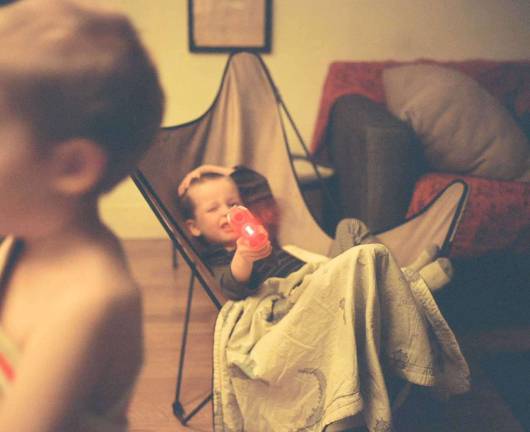Are toy guns okay?

Two moms of 7-year-old boys square off on the question of gun play.
Nothing fun about violence
I don’t do guns in my house.
Students walked out of schools on March 14 to protest school shootings. Liberal media condemns how easy it is to acquire guns. The NRA is portrayed as a horrible organization. Even those who support hunting (as I do) speak out against semiautomatic weapons.
Yet: I have a 7-year-old son, and every single one of his friends has guns. Water guns, Nerf guns, laser guns, tiny Lego pistols, even a BB gun or two. They aren’t using these to pretend to shoot deer.
To me, this is crazy. I see nothing entertaining about violence. Why is it “fun” to watch someone shoot someone else in a movie? How is it “fun” to pretend to hurt or kill someone with a toy gun? We tell youth to respect each other while simultaneously enabling our children to shoot at others for entertainment. This act of violence is portrayed as normal and fun. It is so ubiquitous that parents don’t even seem to think about it.
Eliminating physical toys is one thing, but of course any object—a stick, a rock, two pointed fingers—can and does become a gun. I’ve also outlawed this. The sticks are still there, of course, but my son now knows to use them to spray spaghetti, eject a super strong net to catch someone, or do anything else that doesn’t cause pretend death or injury. With a little imagination, those sticks can be a lot more interesting than a gun with bullets.
Does my son still want to play with pretend weapons? Sure. It comes up all the time. It’s hard to enforce. But for this particular value, it’s worth it. Kids should respect others, not inflict harm. I was raised in a toy gun free household and didn’t understand. Now I do. I hope that my kids understand one day too.
Katrina Krasnansky is school psychologist who lives in Croton-on-Hudson, NY
Play is essential for growth
My son, 7, plays with toy guns. When I say toy, I mean toy. He has an arsenal of Nerf-style guns, and two vintage cap guns. He plays with these guns with his friends(boys and girls alike). I do not expect him to continue a fascination with real weapons in his life. Studies show that using toy guns is merely that for children - play and toys. They are not associated with later-life gun violence.
Young children express themselves through play. They learn and see the world through play. The best thing a parent can do is give their
children play time. They learn to interact with others, and develop imagination. As adults, we often forget how development happens and turn everything into adult terms.
By letting my child play, and educating him in the process, I am allowing proper development to occur in his brain. Such play also brings about the chance to talk about important things like differences in guns and play versus real life.
As a health educator, I can safely say mental and emotional health problems, and lack of support, are the prime reasons that people turn to
hurting themselves or others. If we want to help our children live less violent lives, we need to make them feel connected and loved. By doing so we teach them compassion and provide skills to cope with life.
Our schools are unprepared for this because the focus has been purely on academics for too long. Classes like health education and life skills have been cut.
If everyone feels safe, loved, and included in life there is no need to hurt those around us. We care too deeply about them to hurt them. But when everyone is disconnected from the people around them, and only connected to devices and technology, it’s hard to feel loved and easy to feel left out. We are people and need personal connections.
Kate Bryant blogs at simplymindfulwellness.com and itsnotjustavirus.com about rare childhood autoinflammatory disorders. She wrote How to Get a Diagnosis and PFAPA, after her son’s journey to a diagnosis of a periodic fever syndrome.